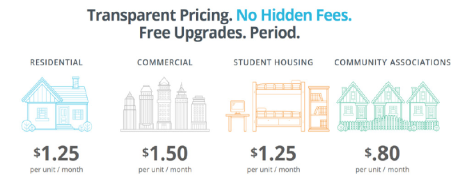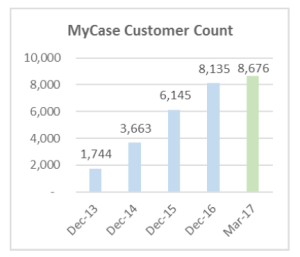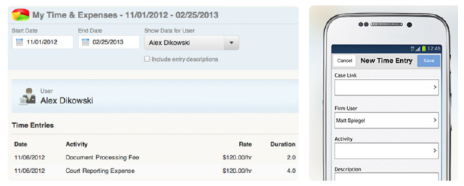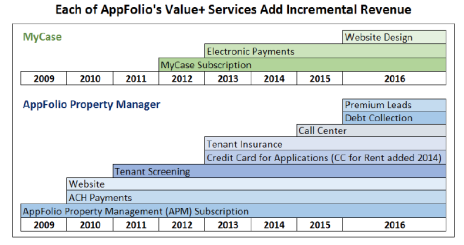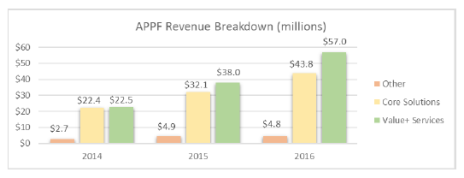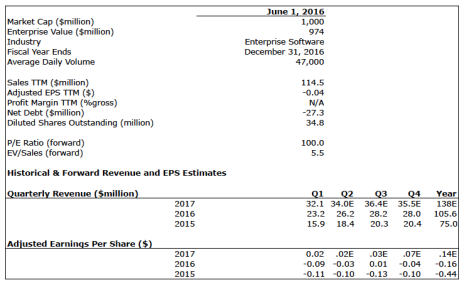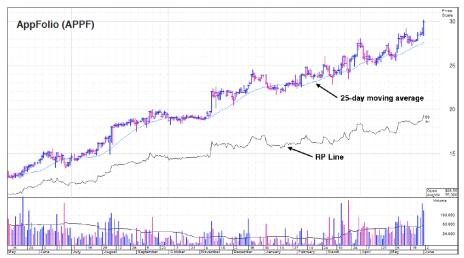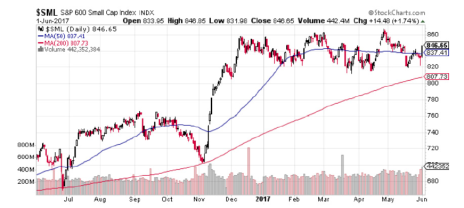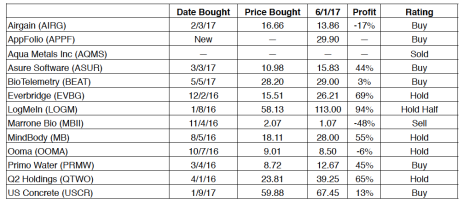This month, we’re going back to what’s served us well, small business software. The company has a cloud-based software solution tailor-made for property managers. It’s growing revenue by more than 30%, has no debt, and is on track to become profitable this year. The chart is solid. And I believe the company will ultimately be sold, hopefully at a nice premium to where shares trade today.
Cabot Small Cap Confidential 217
[premium_html_toc post_id="134682"]
THE BIG IDEA
In 2004, I bought an old farmhouse in Vermont. Motivated by the romantic notion that I would completely update the home with modern materials and technologies, but repurpose every possible scrap of original material that was practical to reuse, I leaned into my task with everything I had.
I knew the home would eventually feature original wide-plank hemlock floors with a burnished oil finish, hand-hewn beams throughout, bead board wainscoting, in-wall speakers, radiant heat, and efficient windows appropriate to year the house was originally built, which was 1849. But I didn’t know how hard it would be.
At first, the hours didn’t matter much. I had set out to do every bit of work that I could by myself. This was no problem given that I wasn’t yet married, had no kids, was self-employed, and didn’t even own a dog. I had a respirator and a willful pursuit of a virtuous goal.
There is a story to be told here. About the realities of taking on large, complex challenges. About balancing limited resources with limitless dreams. And about maintaining appropriate respect for building materials crafted in the years before the civil war.
But that’s not the story I’m telling today. Today’s story begins with a little technology company formed in 2006 whose founders embarked on a similar adventure to build something unique and authentic. Something which displayed the beautiful finish on the surface, while keeping the complex systems hidden, accessible only to those who built them and who had authorized access.
I didn’t find out about the company until many years after its founding, when I was “over the hump” with my renovation project and my house could be inhabited by people who enjoyed creature comforts like central heating, plumbing and electricity.
The company came to my attention through the experiences of renting my house in Vermont and my wife’s house in Rhode Island. We rented her house in Rhode Island from 2009 to 2012 after she moved to Vermont. And we’ve been renting the house in Vermont since we moved into her house in Rhode Island in 2012.
Even though it’s just one “unit,” it can be a lot of work at times. Being five hours away does provide a nice buffer, however. And it has forced me to establish processes that increase reliability, while driving complexity out of the management process.
I’ve tried a number of software solutions to help with the management process. Unfortunately (or fortunately, I’m not sure which), my rental asset base is too small to justify the cost of an industry-specific solution. Quicken Rental Property Manager is fine for keeping track of expenses, but it doesn’t help with the actual tenant and property management-related stuff that represents the bulk of the work.
I can see how multi-unit property managers benefit from a best-of-breed software solution for all the repetitive tasks they face on a daily, weekly and monthly basis.
How blissful it would be if I had an app on my phone through which I could accept rent payments with no fee! Through which I could manage a property maintenance schedule, complete with a calendar, vendor contact details and work orders.
My dream solution would also include a communication portal, so personal emails and text messages with vendors and tenants could be reduced (or even eliminated), but there would still be a system of record for all communications. Cloud-based document storage would be included, of course.
Must-have features would include tenant screening and credit check, as well as lease delivery and acceptance, with digital signatures. There would also be the option to offer renters insurance so tenants know their stuff isn’t covered by my homeowner’s policy, just in case they didn’t read the entire lease!
In short, my dream software solution would facilitate all the repetitive tasks needed to ensure the property is maintained, the asset is protected, the rent is paid on time, big issues are avoided, good renters are found (and kept happy), and there’s a profit at the end of the year. And a dedicated record of all communications, documents, work orders and receipts would be kept in one centralized location.
As it happens, such a solution isn’t a pie in the sky dream! Professional property managers are buying it, using it, and loving it right now. They use it to more efficiently manage their businesses, and to help them grow. They’re also helping property owners ensure their assets are protected.
In 2006, two years after I bought my house in Vermont, Klaus Schauser and Jon Walker began cooking up their vision of the ultimate software solution for property managers. You’ll probably recognize Mr. Schauser’s work. He was one of the founders of Citrix (CTXS) and helped create the family of GoTo solutions that were recently acquired by portfolio holding LogMeIn (LOGM) for $1.8 billion. Mr. Walker is a computer engineer, and previously worked at Miramar (acquired by Computer Associates) and Versora (acquired by Kaseya). He is considered a pioneer in the area of data migration, and has created advanced migration software that has been deployed on over 40 million computers worldwide.
Schauser and Walker’s company introduced its first software solution in 2008. Then it added more. They attracted capital, and the company eventually went public in 2015. Today, its software helps more than 10,000 property management clients manage nearly three million properties. To say it’s been a success would be an understatement.
The company is growing rapidly, is about to become profitable, and is still a small cap. Not only is it the basis for a good story, I believe it is also a good investment today. That’s why it’s this month’s Cabot Small-Cap Confidential candidate.
THE COMPANY/PRODUCT
AppFolio (APPF) was formed in 2006 to provide cloud-based software solutions for small businesses in the property management industry. Its property management solution was first offered to the market in 2008. A year later, AppFolio began offering value-added services for property management clients (website hosting, automatic payments, etc.). It expanded into the legal market in 2012, and has begun offering value-added services for legal customers in the years since.
The Goleta, California-based company went public at 12 in 2015, a year in which revenue grew by 57% to $75 million. Revenue eclipsed the $100 million mark in 2016, when AppFolio grew sales by 41% to $105.6 million. The company currently has a market cap of $1 billion, is expected to grow 2017 revenue by 31%, and is on track to deliver its first year of positive earnings per share (estimated EPS is $0.14).
It is a customer-centric enterprise, with a philosophy of constant contact between customers, software engineers and product management teams that leads to outstanding products that meet clients’ specific needs.
The principle goals of the software platform are to automate recurring businesses processes and facilitate functions such as accounting, document management, business analysis, and communications between AppFolio customers, clients and vendors. Like all cloud-based software, AppFolio’s solutions work on laptops, tablets and smartphones. Regular upgrades and new product introductions are quickly available to all clients.
AppFolio offers far more value to its target customer base than the mishmash of general purpose solutions that many still use, which include products like Quicken and Microsoft Excel. The basic pitch is that once customers move away from antiquated solutions and jump into a purpose-build industry specific-solution, their businesses flourish. And the software that helps them accomplish all of this is available for a very reasonable price from AppFolio.
The company introduced its first core solution, AppFolio Property Manager (APM) in 2008. The following year it began offering value-added services, aptly called Value+, for property management customers who wanted to layer additional functionality on top of APM. The addition of Value+ services was part of a well-executed growth strategy that has allowed customers to tailor the functionality of APM to their specific needs and budgets. Today, AppFolio has around 10 Value+ services, collectively generating more revenue than its two core software solutions.
AppFolio’s second core software solution targets the legal and case management market. Instead of building this solution in-house, the company acquired the asset in 2012 when it bought MyCase. While MyCase and its associated Value+ services generate just 10% of revenue, the expansion illustrates how AppFolio is likely to grow in the future—namely by leveraging its platform to meet similar business needs in different industries (I go into more detail in The Business Model segment below).
For now, AppFolio remains focused on the property management and legal verticals. All solutions have the same basic value proposition: help customers in end markets to stop messing around with old cumbersome technologies and paper-based recordkeeping and become efficient operations capable of better servicing their clients and pursuing growth.
AppFolio Property Manager (APM)
AppFolio built AppFolio Property Manager (APM) from the ground up. Today, the solution has nearly 10,500 customers (customer count grew by 22% in 2016) managing 2.8 million units (up 23% over the last year). Customer size varies; some clients manage 50 units, while others manage 3,000 units. Collectively, property manager customers (including associated Value+ services) generated over 90% of revenue in 2016. This chart shows the product’s customer and unit count at the end of each of the last four years, as well as client and unit count at the end of March 2017 (in green).
The solution is targeted toward small and medium-sized apartment, residential, commercial, student housing and community association property managers. Pricing is straightforward and affordable. There is an onboarding fee ($400 minimum) depending on the size of the client’s portfolio, then regular monthly subscription fees that scale with the number of units under management (or a flat $250 minimum monthly fee for smaller customers). Select Value+ Services are charged based on frequency of use.
The core APM solution has a ton of functionality, spanning accounting, payments and marketing. This is just some of what it does to help property managers more effectively market, automate and grow their businesses:
Accounting: APM’s integrated accounting software was developed specifically for property managers. In addition to standard features (accounts payable, accounts receivable, etc.), it offers 1099 creation, and ratio utility billing to break out each resident’s share of utility costs in multi-unit properties.
End-to-End Lease Processing: APM has a mobile-friendly online leasing solution that allows potential lessors to access and complete rental applications from a vacancy listing, and upload the required documents (driver license, etc.). If approved, the property manager can use the uploaded data to pre-populate a lease agreement that the applicant can sign online. Functions such as lease template editing/saving and auto lease renewal are included.
Property Owner Portal: Property owners want to know their assets are being taken care of. APM helps by offering a secure online owner portal to facilitate communication with property managers. Important documents, including owner statements, property inspection reports, invoices, completed work orders, etc. can be shared through the portal. Owners can send money directly to the property management company, and text messages can be sent and saved.
Owner and Vendor Payments: Owner and vendor electronic check functionality empowers property managers to quickly and securely pay owner, vendor and tax bills directly from APM, without paying bank processing fees. Credit and debit card payments are processed for a small transaction fee. Rent can be paid in cash at 7-Eleven and ACE Cash Express locations. All transactions go directly into APM’s accounting software.
Transparent Property Maintenance: Built-in property maintenance software allows for electronic work orders for both one-time and recurring projects. Residents can access tenant portals to request maintenance. These are automatically turned into work orders once approved by property managers.
RentMatch Comparison: RentMatch pulls data from AppFolio’s customer database and analyzes unit features (number of bedrooms, bathrooms, etc.) and rent prices of all units in the same geographic area. Customers use the feature to set competitive rental prices..
Value+ Services for APM
In 2009, AppFolio began offering a suite of Value+ services that clients can layer on top of its core APM software solution. Over the years, it has added to the Value+ lineup and this revenue base appears to be growing at a healthy clip.
Website Design and Hosting: The first Value+ service to be launched in 2009 lets APM clients hand the reins to their website over to AppFolio. All websites are integrated with APM and include a blog, mobile functionality, image gallery, floor plans and website actvitiy tracking. The cost is $50 per month, plus a one-time $2,000 onboarding fee.
Electronic Payments: In 2010, AppFolio added ACH payment processing, then expanded to permit credit and debit card payments in 2013. Typical payments on the platform include rent, rent application fees and security deposits.
Resident Screening: In 2011 AppFolio began offering instant background screening and credit checks to help streamline the rental application process. Property managers can simply press a “Screen Now” button once a new online rental application comes in and view a credit check, plus a nationwide eviction screen for $10. For $15, a criminal records search can be added. Experian RentBureau rent payment history data is included.
Tenant Liability Insurance: In 2012, a basic tenant liability insurance program began to be offered that allows property managers to offer residents insurance that is easily linked to lease signings and renewals. Property managers can use this optional service as a selling point when marketing their services to property owners. It costs $9.50 per month for each enrolled unit.
Contact Center: APM added 24/7 contact center support in 2014 to help resolve and route incoming maintenance requests. Call center agents enter work orders directly into APM to facilitate property manager approval and vendor dispatch. Cost is $1 per month, with 200-unit minimum.
Debt Collection: When you need to hunt down a deadbeat, it’s nice to outsource the dirty work. Since 2016, AppFolio has worked with a nationwide debt collection service, which keeps 40% of the collected rent.
Premium Leads: Since 2016, APM customers have been able to upgrade vacancies to “premium status,” immediately sending the unit to pay-to-list websites. The property manager pays $10 per verified lead.
MyCase
AppFolio entered the legal vertical in 2012 when it acquired MyCase. MyCase is a cloud-based legal software solution that helps solo practitioners and small law firms (under 20 lawyers) spend less time administering their practices and managing caseloads, and more time generating billable hours. Today the software offers these clients a flexible practice and case management solution that covers all the major functional areas that make a small law practice tick.
The company offers a no-cost trial of the service for 30 days, and then charges $39 per user per month. There is no data storage limit. The client base shortly after MyCase was acquired at the end of 2013 was 1,744. At the end of 2016, MyCase was up to 8,135 customers. Client count grew by 32% in 2016, and by another 27% (to 8,676) in Q1 2017. While customer count growth is rapid, the solution still accounts for less than 10% of revenue since the size of the customer base pales in comparison to APM, and MyCase has far fewer Value+ services (for the time being).
Here is a sampling of what MyCase does:
Time Tracking and Billing Software: MyCase lets lawyers enter and link hours (billable, pro bono, meetings, court time, etc.) to any case or client. Billing software generates trust account balances and provides customizable invoicing templates, all of which integrate with QuickBooks. Reports can pull unbilled time and expenses, plus flat fee balances, to provide important firm productivity metrics.
Document Management: Documents can be stored and shared using a drag-and-drop upload tool so that all approved parties can access documents from a searchable firm library. Customizable templates allow people to collaborate in drafting new documents.
Secure Client Portal: Clients have access to a secure portal through which to view invoices and sensitive documents via a real-time activity stream, complete with comments and uploaded items.
Automated Organizational Tasks: MyCase includes workforce software to allow lawyers to automate processes for routine tasks. Contacts, tasks, calendars and reminders are synchronized across all devices so the entire team can manage time, receive updates and link upcoming events to cases and appropriate billable rates.
Value+ Services for MyCase
AppFolio offers two Value+ services specifically for MyCase.
Electronic Payments: Since 2013, MyCase clients with this optional service have been able to accept online credit and debit card payments for a flat 3% transaction fee, or accept eCheck payments for free. Clients can view invoices and pay retainers directly through the Client Portal. MyCase keeps track of trust accounting as necessary.
Website Design: AppFolio can build a website for MyCase clients that is optimized for marketing and mobile. Websites are fully integrated with MyCase so clients and their customers enjoy the full functionality of the service. This service was added in 2016.
The Business Model
AppFolio sells software and related services to a wide base of predominantly U.S. customers, none of which account for over 10% of revenue. The majority of revenue is derived from cloud-based software solutions (APM, MyCase and Value+ Services, including website hosting and contact center services), for which it charges subscription fees with terms of a year or less. A smaller percentage of revenue is generated from usage-based fees for Value+ Service (including electronic payment processing, resident screening, tenant liability insurance program, debt collections and online vacancy advertising services). Roughly 90% of revenue comes from customers in the property management vertical given the sheer number of units being managed on the platform (approaching three million), compared to under 10,000 law firms in the legal vertical.
The three accompanying charts help illustrate how growth in customer count and the number of Value+ Service offerings are driving AppFolio’s revenue growth. The first chart is a timeline showing when each Value+ Service for APM and MyCase were added.
The second chart consolidates customer count for both APM and MyCase, as well as APM units under management.
And the third chart is a yearly breakdown of revenue for each of AppFolio’s three reporting segments: (1) Core Services (APM and MyCase), (2) Value+ Services, and (3) Other revenue, which includes one time on-boarding fees, website design services and online vacancy advertising revenue from legacy customers (acquired in 2015 when AppFolio purchased the vacancy advertising solution RentLinx).
As you can see from the revenue breakdown chart, Core Solutions and Value+ Services generated almost the same amount of revenue in 2014 (roughly $22.5 million). In 2015 the APM customer count grew by 40% (to 8,218), units under management grew by 28% (to 2.2 million) and the MyCase customer count grew by 68% (to 6,145). With more Value+ Services to choose from, and more customers to sell Value+ Services to, AppFolio grew total revenue by 57%. The same dynamics helped drive total revenue up by 41% in 2016.
The point is that AppFolio appears to have a very disciplined and planned strategy to grow. That’s good. It suggests that the management team is constantly refining strategies to grow, overcoming challenges, moderating risks and, ultimately, growing the value of the company.
The Bottom Line
AppFolio grew revenue by 57% in 2015 and by 41% in 2016 (to $105.6 million). Adjusted EPS was -$0.16, and there were 34.8 million diluted shares outstanding at year end. In the first quarter of 2017, the company grew revenue by 38.4% to $32.1 million, and delivered EPS of $0.02. The company has largely been able to keep expenses at about the same percentage of revenue, so as the revenue base grows, more is flowing to the bottom line. This is what’s called achieving profitability as the business scales, and it’s a good thing—it tends to show disciplined expense management. I expect the company will grow revenue by around 30% annually over the next two years, and be profitable as well. Consensus EPS estimates of $0.14 in 2017 and $0.29 in 2018 seem reasonable to me. AppFolio has no debt.
RISK
Expansion into other verticals: AppFolio has pledged to grow, in part, by expanding into new business verticals. Clearly, the business is succeeding in the property management industry. Expansion into the legal vertical appears to have added incremental growth, but still represents a small slice of total revenue (under 10%). At some point, management will need to devote more resources to grow the legal business, and/or direct resources to branch out into a third business vertical. However, it makes sense to focus on growing in the property management space for as long as that market supports growth. The point is that, possibly within two years, questions regarding “what’s next?” could become more frequent, especially if growth in the property management industry slows. I’d like to see management lay out a plan for expansion into other verticals or fully commit to being the best property management solution in the market—that would mean divesting of MyCase and probably acquiring smaller players in property management.
Service disruption: Like all cloud-based software solutions, AppFolio runs the risk of its platform going down. It runs on Amazon Web Services and appears to be robust, but things do happen from time to time.
Electronic payments: AppFolio’s electronic payments solution has been a hit. But the landscape for digital payments is evolving rapidly. Nothing is set in stone, and the company will need to be vigilant addressing competitive threats far into the future.
Valuation: Rapidly growing cloud software vendors tend to see their stocks trade at a premium, and AppFolio is no different. A significant correction in tech stocks, and cloud software stocks in particular, could sting in short-term.
COMPETITION
AppFolio’s solutions compete with a number of software solutions from companies across the size and maturity spectrum. In the Property Management area, AppFolio competes with RealPage (RP), Yardi, MRI, On-Site, Entrata, Buildium, Quicken, ShowMojo and RentPayment. In the Legal Practice business, AppFolio competes with Clio, Rocket Matter, ActionStep, CosmoLex, LexisNexis, Thomson Reuters, Abacus Data Systems, LawPay, Fastcase, Hotdocs and Netdocuments.
THE STOCK
Trading Volume: AppFolio has a market cap of $1 billion and trades an average of 47,000 shares daily. That means roughly $1.4 million worth of stock trades each day. Our subscriber group shouldn’t move this stock. Heavy days are +100,000 shares, and that’s happened six times in the last year.
Historical Price: The company went public in June 2015 at 12 per share. It traded up to 20 by mid-October then retreated for several months, along with most software stocks. Shares were back to their IPO price by April 2016. At that time, they crossed back above their 50-day moving average, and they haven’t decisively broken it since. The stock’s advance has been constant and steady, with normal pops and drops of around 2 points along the way. Shares reached 20 in September 2016, and traded as high as 24 by year-end. A brief pullback to 22 occurred in January. Since then, shares have resumed their upward march and are currently trading close to 30, and right at a 52-week high.
Valuation and Projected Price Target: APPF trades with a current year EV/Sales multiple of 6.9, and a 2018 EV/Sales multiple of 5.5, meaning the stock trades just about in line with the average multiple for cloud software stocks growing revenue by over 30%. Best-of-breed software stocks, including Shopify (SHOP), are receiving target prices implying 2018 EV/Sales multiples of 11! That’s a little high for AppFolio given that it implies the stock is undervalued by over 50% right now. Still, I believe APPF warrants a premium multiple of around eight-times 2018 estimated revenue. That implies the stock has roughly 45% upside over the next 12 months, which means we can set our starting target price at around 40.
Buy Range (next two months): My widest buy range is between 24 and 35. But I doubt we’ll see 24 unless we have a substantial market correction. The chart suggests buying in the 26–27 range is the best deal you’ll get in the near-term because that price range straddles the stock’s rock-solid 50-day moving average line. Therefore, my narrow buy range is 26–30. Average in, buying fewer shares up near 30 and more down near 26, if you can.
The Next Event: Management will likely announce Q2 2017 results and host a conference call in the second week of August.
AppFolio (APPF) Financials
AppFolio (APPF 29.90) |
UPDATES ON CURRENT RECOMMENDATIONS
Due to the nature of the stocks recommended, it is to your advantage not to share these recommendations.
The S&P 600 Small Cap Index is still range-bound, and is only 1.1% changed since last week.
That performance moved small caps up just a little more than large caps (which were up 0.7%), with sector performance mixed. Small continues to outperform in health care and tech, which has been the case since the election.
As has become the norm, there’s a lot going on in the White House and it’s hard to project exactly how stocks will react. But economic signals continue to be largely good, though today’s job growth figures show a slowing in 2017 versus 2016 and 2015. Still, with the unemployment rate now at 4.3%, the lowest in 16 years, it’s hard to look at job figures in a negative light.
It’s a fine balancing act these days. We don’t want to be overexposed to the market given high valuations and unpredictable leadership in Washington, but we don’t want to cut and run either given that many companies are posting robust revenue and earnings growth. By and large, the strong stocks are staying strong while the weak stocks are staying weak. Common sense suggests we should stick with the strong and/or buy more, cut the weak, and add exposure to those in the middle that have good growth prospects and decent fundamentals, but just haven’t rallied yet.
Let’s do what makes sense. Today’s issue featured another strong stock that should do well in the months ahead. And it’s time to throw in the towel in our weakest performing position as the stock continues to fail to find support. Details below.
Strong Buy means the stock should be bought immediately and is expected to move sharply higher in the very near future.
Buy means accumulate shares at or around the current price.
Hold means just that; hold what you have. Don’t buy, or sell, shares.
Sell means the original reasons for buying the stock no longer apply, and I recommend exiting the position.
Sell a Half means it’s time to take partial profits. Sell half (or whatever portion feels right to you) to lock in a gain, and hold on to the rest until another ratings change is issued.
Updates
Airgain (AIRG)
The stock has been kicking around in the 13–14.50 range since the second week of May. Nothing changed over the past week. An analyst named Colin Ferrian from Harbor Research, a Colorado-based research firm that, among other things, focuses on the Internet of Things (IoT), has been posting IoT-related content on Seeking Alpha for the past several months. His latest post, IoT Monthly: The Path to 5G, provides some interesting context for those interested in the space and how Airgain fits in (the post isn’t specific to Airgain, but the company is discussed). Continue to be patient. BUY.
Aqua Metals (AQMS) No update. SOLD.
Asure Software (ASUR)
The stock initially traded down following last week’s acquisition announcements and news that, to help fund them, Asure would offer roughly 1.5 million shares at 12, to raise $18 million. That offer price represented an 18% discount to the previous close. It appears demand for shares was stronger than expected since we just learned that, including the underwriters’ over-allotment option, Asure ended up issuing 2.185 million shares at 13.50 each, to raise $27.5 million. Suffice to say that when your stock is trading at almost 15 you’re a lot happier to hear that the market is willing to pick up dilutive shares for a 10% discount versus an 18% discount! Plus, the $9.5 million in extra capital isn’t chump change. The stock has been moving higher over the past week and news of the offering price yesterday has helped it move over 15.50. We’re up over 40%, and last week I moved to Hold just to be a little cautious. Given the market’s reaction, I’m moving back to Buy today for aggressive investors only, who want a little more exposure. The honest truth is you never know how a little stock like this will trade day to day, especially when shares are being issued. But demand seems strong, the stock is rising, and these two latest acquisitions are 5.5-times larger than the one that helped the stock double between August 2016 and mid-February 2017. We have the makings of a serious contender in the HCM space here, and I think investors that saw how well stocks like CornerStone OnDemand (CSOD) and Ultimate Software (ULTI) have done are anxious to get into Asure. BUY (if you’re aggressive).
BioTelemetry (BEAT)
The company announced on Tuesday that LifeWatch’s largest shareholders, who collectively own about one-third of the company, have agreed to support BioTelemetry’s tender offer. LifeWatch’s Board of Directors has pledged unanimous support as well. I don’t know at what point they’ll have to go door to door to clue individual shareholders in to what’s going on, but hopefully it doesn’t come to that. The offer period has been extended to end on June 8 (a week from yesterday), so we should get another update soon. If needed, an additional acceptance period could run from June 15 to June 28. That’s when BioTelemetry would starts knocking on doors. This deal should go through, at which point we can begin to focus on the business. Shares have been moving modestly higher over the past week. BUY.
Everbridge (EVBG)
Management is presenting next Tuesday at the Stifel 2017 Tech, Internet & Media Conference in San Francisco, and at the William Blair Growth Stock Conference the following Tuesday in Chicago. Terrible events like the Ariana Grande concert blast and this week’s bombing in Kabul serve as more unfortunate reminders of why we need solutions like those provided by Everbridge. Keep holding. HOLD.
LogMeIn (LOGM)
The stock is up a couple of points over the past week but there’s no real trend. Management announced more progress on the product development front with respect to GoTo products. GoToWebinar has been upgraded to allow presenters to record a webinar ahead of time and release it as if it were live in “Simulated Live” mode, and to integrate pre-recorded video. Management will attend the Bank of America Merrill Lynch conference on June 6 and a conference hosted by Baird on June 8. HOLD HALF.
Marrone Bio (MBII)
I moved our most speculative position to Hold last week given the prolonged weakness, and shares have continued to slide over the past five days. The main issue here isn’t product quality, sales growth or potential. It’s debt. I had anticipated that Marrone would be able to complete a comprehensive recapitalization event to address the challenge when the wind was at its back in terms of revenue growth. Despite a nice pick up in sales, to date, it’s just been using a pea shooter to address its capital needs. It needs to break out the elephant gun. There’s no way for us to know what conversations are going on in the board room. One would hope they are actively negotiating with potential partners to sell a stake in the company or the entire thing. But maybe the price just isn’t right. What we do know is that Marrone will need to raise more capital in a quarter or two, and without anything to go on, the market is anticipating unfavorable terms. We’ve only taken on half a position in the stock, based on the reality that this is a deep turnaround story and we didn’t want to risk too much capital, and that we could either average up or average down, depending on how things went. At this point, it doesn’t seem wise to add more capital. Maybe if shares get down into the $0.70–$0.85 range, or if we get news of a material positive event, but not right now. That leaves us with two choices: hold on or walk away. Let’s begin the process of walking away. This puts us at risk of selling out of the stock at a loss, only to have something big and good happen that drives up shares and we miss out. But it also removes the risk of losing more money. And the existing capital can be directed into something that’s acting more constructive and which, a year or two from now, may easily go up more than MBII.
In other words, the opportunity cost of holding on to MBII right now seems too high. I don’t think we need to go and sell out completely today. Rather, it makes more sense to reduce your stake incrementally over the course of a few days or weeks. As always, I’ll be keeping an eye on the company since if something good does happen and the stock begins to turn around, we can easily jump back in. We know the story, the fundamentals, the challenges, and the potential. The company will be presenting at the LD Micro Invitational Conference next Wednesday in Los Angeles, and that timing might help drive speculation that the company has something material to disclose. This could help drive some incremental demand for the stock that we can sell into. SELL.
MindBody (MB)
The stock is unchanged over the past week as we move into wait-and-see mode after the company moved to raise around $130 million. With $88 million in the bank, MindBody can easily go on a $200 million shopping spree, or more if it wants to take on some debt, or issue more shares to an acquired target. The likeliest targets are its API partners, competitors with membership products specific to the health and wellness industry, or other business verticals where similar solutions are used. PerfectMind, Wodify, Salon Iris and Book4Time all come to mind simply because there is some level of competition, but I haven’t done any due diligence on the names (they are private, so we can’t invest in them anyway). It wouldn’t surprise me if Mindbody was interested in growing its spa presence, which would include Salon Iris and Book4Time. But again, this is just rampant speculation. HOLD.
Ooma (OOMA)
It still feels like the recent selloff was a little overdone, so we’re holding onto OOMA for now. The stock appears to have stabilized, so provided it doesn’t slip too much more, there’s no pressing reason to walk away just yet. Management will speak at the William Blair Growth Stock Conference on June 13 in Chicago, so perhaps some newsworthy developments will be divulged. Keep holding. HOLD.
Primo Water (PRMW)
Last week’s 12% rally to 12.3 was followed up with another 3% move this week. We’re just above the 50-day moving average line, and the 200-day is at 12.8. If we can get above both, the technical signals move more bullish and should draw in more buyers. Keeping at Buy. BUY.
Q2 Holdings (QTWO)
The stock has traded down most sessions over the past week. No fundamental updates. Keep holding. HOLD.
U.S. Concrete (USCR)
No fundamental updates and shares are still bounding around in the same 65–72 area that’s held up since early May. That said, there’s no real trend here to speak of, unless you want to call six months bouncing between 58 and 72 a “trend.” I’ll reiterate the same message as I have over the past two weeks: we need positive fundamental developments—like news about a new regional expansion—to help push the stock through resistance in the 71–72 zone. Keeping at Buy. BUY.
Please email me at tyler@cabotwealth.com with any questions or comments about any of our stocks, or anything else on your mind.
Next Cabot Small-Cap Confidential issue is scheduled for July 7, 2017
Cabot Small-Cap Confidential is published by the Cabot Wealth Network, an independent publisher of investment advice. Neither the corporation nor its employees are compensated in any way by the companies whose stocks we recommend. Sources of information are believed to be reliable, but they are in no way guaranteed to be complete or without error. Recommendations, opinions or suggestions are given with the understanding that subscribers acting on information assume all risks involved. Copyright © 2016 - COPYING AND/OR ELECTRONIC TRANSMISSION OF THIS NEWSLETTER IS A VIOLATION OF THE U.S. COPYRIGHT LAW. For the protection of our subscribers, if copyright laws are violated by any subscriber, the subscription will be terminated.
[premium_html_footer]






